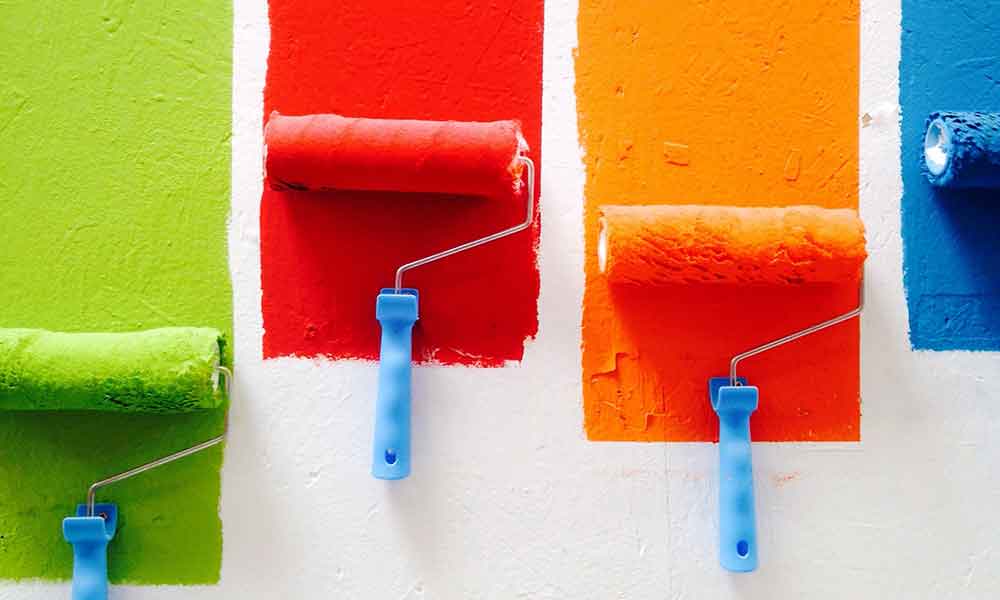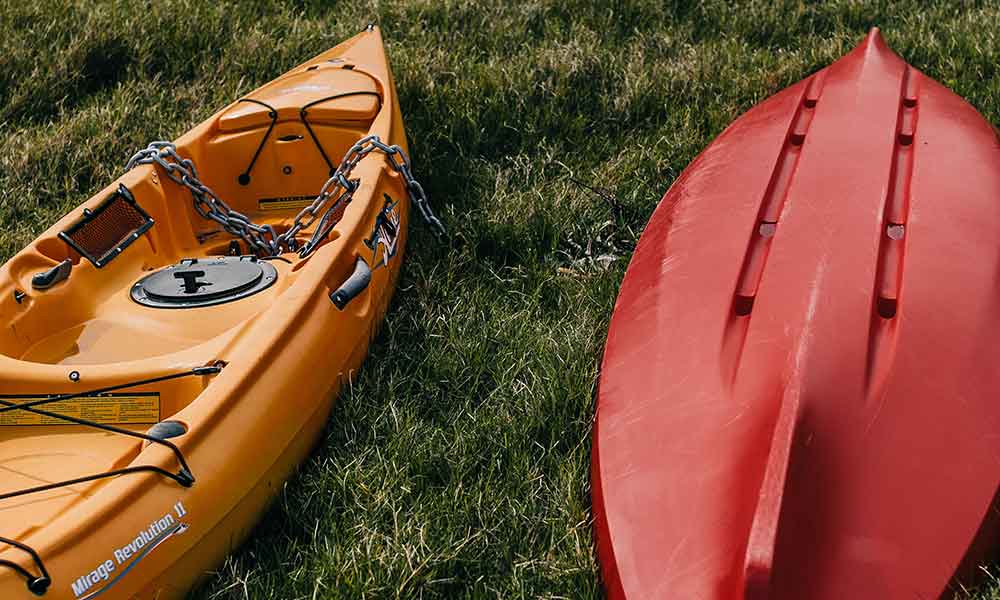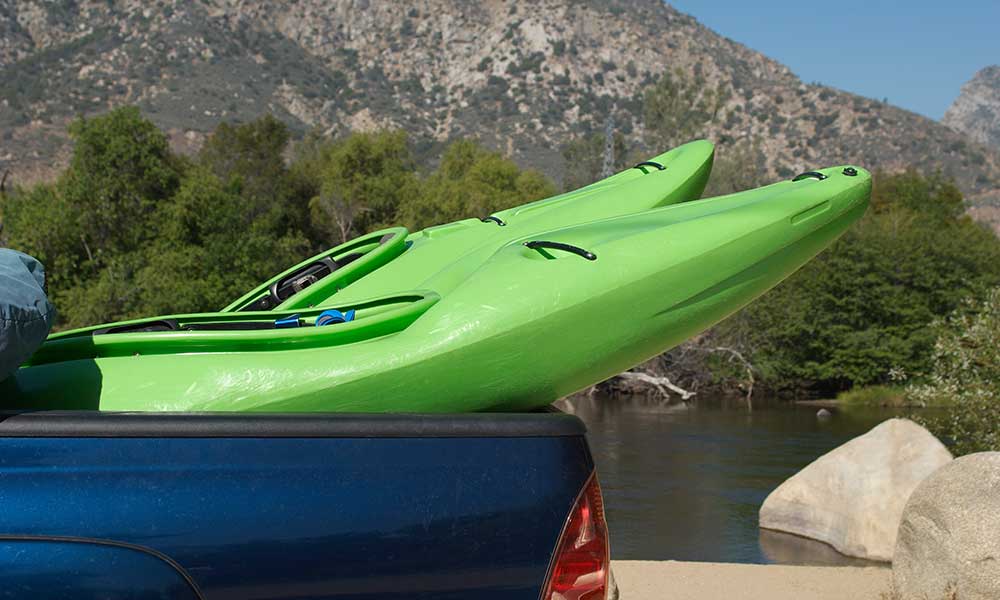A kayak is not a cheap watercraft, so people want to take good care of their kayaks and keep them in good condition. What is the best way to clean your kayak after use and also to protect the hull from damage or aging?
The best method to clean your kayak is to rinse it off with clean freshwater to remove any dirt or saltwater residue. Allow the kayak to dry thoroughly, including the inside of the kayak. Once the kayak is dry, a wax can be applied to a composite kayak or a UV protectant on a plastic hulled kayak.
Cleaning your kayak and taking measures to protect the kayak hull from the environment is a good way to ensure it stays in good condition, maintains its low resistance in the water, and retains its resale value. Looking after your kayak hull the right way is important to achieving these goals.
Why Is It Necessary To Clean A Kayak Hull?
Kayaks are made from different materials, which means the care of the hull will differ, depending on the type of material used in the manufacture of the kayak.
Some environments that kayak is used in will pose more of a risk of corrosion and damage to the kayak than others. Saltwater, as an example, will be more corrosive than freshwater, but freshwater moisture can promote the growth of mold and algae.
It is important to clean a kayak hull to prevent damage from the water the kayak has been used in and protect the kayak from the harmful UV radiation from the sun.
The sun’s rays are damaging to a kayak’s hull no matter what material the kayak is made from. Composite kayaks and fiberglass kayaks become brittle and begin to crack when exposed to excessive UV radiation or left in direct sunlight.
Polyurethane kayaks or plastic kayaks will also lose their suppleness as the plastic compounds harden in the sunlight. The plastic becomes hard and brittle, and prone to cracking.
These cracks in a kayak’s hull become a weak point in the hull, allowing water to enter the kayak or the kayak to break when it encounters an obstacle. The cracks can also harbor the growth of algae and bacteria, further compromising the hull’s integrity and devaluing the kayak.
How To Take Care Of Your Kayak Hull
Part of taking care of your kayak hull included how you transport your kayak and get it to and from the water’s edge.
There is no point in cleaning and protecting the kayak’s hull if you are not going to take care of the hull when using the kayak.
Take Care Of Your Kayak’s Hull When Transporting
Most people transport their kayaks to the put-in spot on the roof of their vehicle. The kayak is usually secured in position on a roof rack to keep the watercraft secure during the journey.
The two most common methods of transporting a kayak on a vehicle roof rack are hull-down or hull-up. If you are transporting the kayak hull down, it is best to use a roof rack that is constructed to support the kayak hull sufficiently. Too much pressure on one point of the hull can cause fractures.
Hull up, or with the kayak upper deck resting on the roof rack, is another method of transporting a kayak, but once again, you need a roof rack designed for this transport position.
Whichever orientation you choose to transport your kayak, do not cinch the securing straps down too tight; the pressure can deform the kayak’s hull, resulting in fractures in the hull.
How To Get You Kayak To The Waters Edge Safely
Once you arrive at your put-in location, you need to key your kayak to the water’s edge. Do not drag your kayak over the ground to the water.
Dragging the kayak over the ground can scratch the hull, and sharp stones can leave significant gouges in the kayak’s hull material. These gouges devalue the kayak and reduce the efficiency of moving through the water.
The best way to get your kayak safely to the water’s edge is to carry the kayak to the water or invest in a kayak trolley. A kayak trolley is a wheeled support for your kayak that you can use to pull your kayak to the put-in spot.
How To Clean Your Kayak Hull
The best way to clean your kayak hull, whether it is a composite material or a plastic hull, is to rinse it off with fresh water.
Make sure you remove any mud or aquatic vegetation that could remain on the hull from your trip. If you have used the kayak in saltwater, it is of particular importance that you rinse the kayak with fresh water both inside and out, especially if you have skegs or rudder systems installed in the kayak.
Saltwater residue on pedals, footrests, and moving parts can cause corrosion or limit how freely moving parts will work.
If you have some stubborn dirt or stains on the kayak’s hull, include some dishwashing liquid in the water you use to wash the hull. A soft-bristled brush can also help to remove stubborn dirt.
Once the kayak is clean, give it a final rinse and allow it to dry thoroughly. Do not leave it in the sun to dry, but rather leave it in the shade. It should dry quickly, particularly if there is a breeze about.
Ensure you dry out all compartments in the kayak to prevent trapped water from becoming stagnant and causing the kayak to smell.
How To Protect Your Kayak Hull
Once your kayak hull is clean, you can further protect the hull by giving it a coating with a protective substance.
The methods and substances used on your kayak will depend on the primary material used in the construction of the kayak. Composite and fiberglass kayaks should be waxed periodically to protect the hull from UV damage.
A car wax product suitable for fiberglass can be used to wax your kayak, or you can use a product such as Meguir’s Marine Pure Wax.
Kayaks made from plastic materials do not need to be waxed, but they can also benefit from a UV protective coating.
The product that is recommended for use on both plastic and composite kayaks is 303 Marine Aerospace Protectant, which helps keep the kayak clean, and leaves a non-greasy UV protective coating on the kayak’s hull.
This product is sprayed on and wiped off with a microfiber cloth or sprayed onto a cloth and wiped onto the kayak’s hull.
Conclusion
Kayak hull care starts with how you transport your kayak and how you get it to the water’s edge and ends with cleaning the kayak and applying protective coatings to the hull.
These measures will protect your kayak from corrosion from the elements and protect it from UV damage from direct sunlight.
Taking care of your kayak’s hull will extend the lifespan of the kayak and keep it looking good for many years of use in the water.







